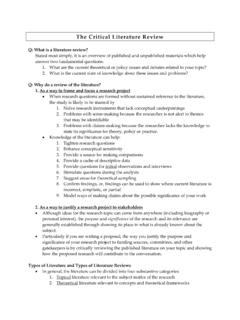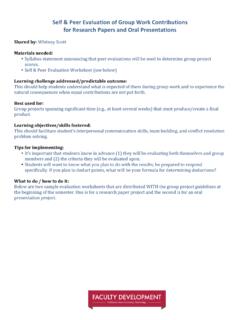Transcription of Five Whys for RCA Tool - Centers for Medicare & Medicaid ...
1 Disclaimer: Use of this tool is not mandated by CMS, nor does its completion ensure regulatory compliance. Overview: Root cause analysis is a structured team process that assists in identifying underlying factors or causes of an event, such as an adverse event or near miss. Understanding the contributing factors or causes of a system failure can help develop actions that sustain corrections. The Five Whys is a simple problem-solving technique that helps to get to the root of a problem quickly. The Five Whys strategy involves looking at any problem and drilling down by asking: "Why?" or "What caused this problem?" While you want clear and concise answers, you want to avoid answers that are too simple and overlook important details. Typically, the answer to the first "why" should prompt another "why" and the answer to the second "why" will prompt another and so on; hence the name Five Whys.
2 This technique can help you to quickly determine the root cause of a problem. It's simple, and easy to learn and apply. Directions: The team conducting this root cause analysis does the following: Develops the problem statement. (See Step 1 of Guidance for RCA for additional information on problem statements.) Be clear and specific. The team facilitator asks why the problem happened and records the team response. To determine if the response is the root cause of the problem, the facilitator asks the team to consider If the most recent response were corrected, is it likely the problem would recur? If the answer is yes, it is likely this is a contributing factor, not a root cause. If the answer provided is a contributing factor to the problem, the team keeps asking Why?
3 Until there is agreement from the team that the root cause has been identified. It often takes three to five whys, but it can take more than five! So keep going until the team agrees the root cause has been identified. Tips: Include people with personal knowledge of the processes and systems involved in the problem being discussed. Note that the Five Whys technique may not always help you to identify the root cause. Another technique you might consider is the fishbone diagram. The fishbone diagram forces you to think broadly across various categories that could be causing or contributing to the problem (See How to Use the Fishbone Tool for Root Cause Analysis tool). Five Whys Tool for Root Cause Analysis Disclaimer: Use of this tool is not mandated by CMS, nor does its completion ensure regulatory compliance.
4 Problem statement One sentence description of event or problem Why? Why? Why? Why? Why? Root Cause(s) 1. 2. 3. To validate root causes, ask the following: If you removed this root cause, would this event or problem have been prevented? Example: Here is an everyday example of using the Five Whys to determine a root cause: Problem statement your car gets a flat tire on your way to work. 1. Why did you get a flat tire? You ran over nails in your garage 2. Why were there nails on the garage floor? The box of nails on the shelf was wet; the box fell apart and nails fell from the box onto the floor.* 3. Why was the box of nails wet? There was a leak in the roof and it rained hard last night. (Root cause=leak in the roof) *IF YOU STOPPED HERE AND SOLVED THE PROBLEM BY SWEEPING UP THE NAILS, YOU WOULD HAVE MISSED THE ROOT CAUSE OF THE PROBLEM.
5













